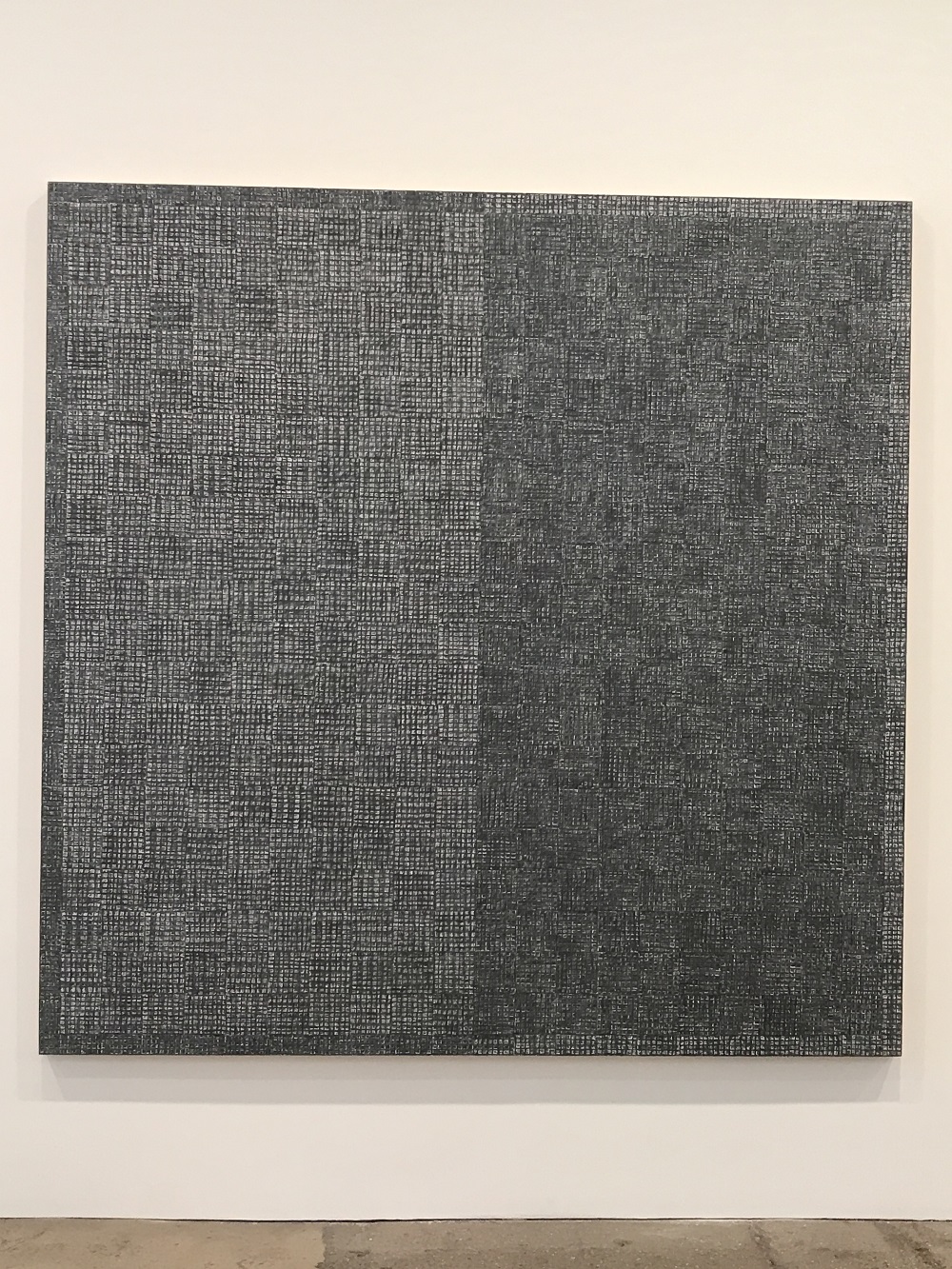
McArthur Binion, Route One: Box Two: V, 2017. Oil stick, ink, and paper on board, 84 x 84 inches (213.4 x 213.4 cm). Gift of Erica Gervais and Ted Pappendick
In New York in the 1970s, McArthur Binion began his artistic career as one of the few Black artists working in an abstract mode. His monochromatic, grid-based paintings merge the reductive aesthetics of minimalism with the eclectic materiality of collage to explore personal and collective memory, particularly that of his formative years growing up in the American South, and often using documents or other materials sourced from his own life.
Route One: Box Two: V belongs to a series of paintings in which Binion cuts black-and-white images to form larger illustrative works. Here, the artist has repeated images of his childhood home in Mississippi into small squares and then affixed them to the surface of a monumental square canvas. Binion describes this underlying photographic layer, which is visible beneath a dark, oil stick grid, as the painting’s “under-conscious.” The overlying grid, in other words, holds the impersonality of abstraction in tension with the autobiographical.
Fragments of other personal documents—discernible in glimpses and gaps from beneath an opaque surface—conjure the process of assembling memories from similarly incomplete or absent information. The physicality of the work’s facture—the artist uses his fingers to apply the oil stick—may also reference the tactile, muscle memory of Binion’s youth working on a cotton farm. Together, the lattice-like layered approach to painting in this work beckons close and careful looking and a unique engagement with the formal language of line, shape, and surface.
Binion’s work embraces the expressive capacities of abstraction and represents a significant direction in the history of abstract painting and Black contemporary art. Route One’s composition, determined by the contrasting warmer and cooler tones of the grid along the vertical axis and the painting’s border, optically engages the forms and tactics of artists such as Charles Gaines and Sol LeWitt. Unlike these practitioners of abstraction, Binion uses negative space as a series of windows onto a personal narrative, where concealment and erasure operate as both creative and subversive modes of visual expression.
2018.01